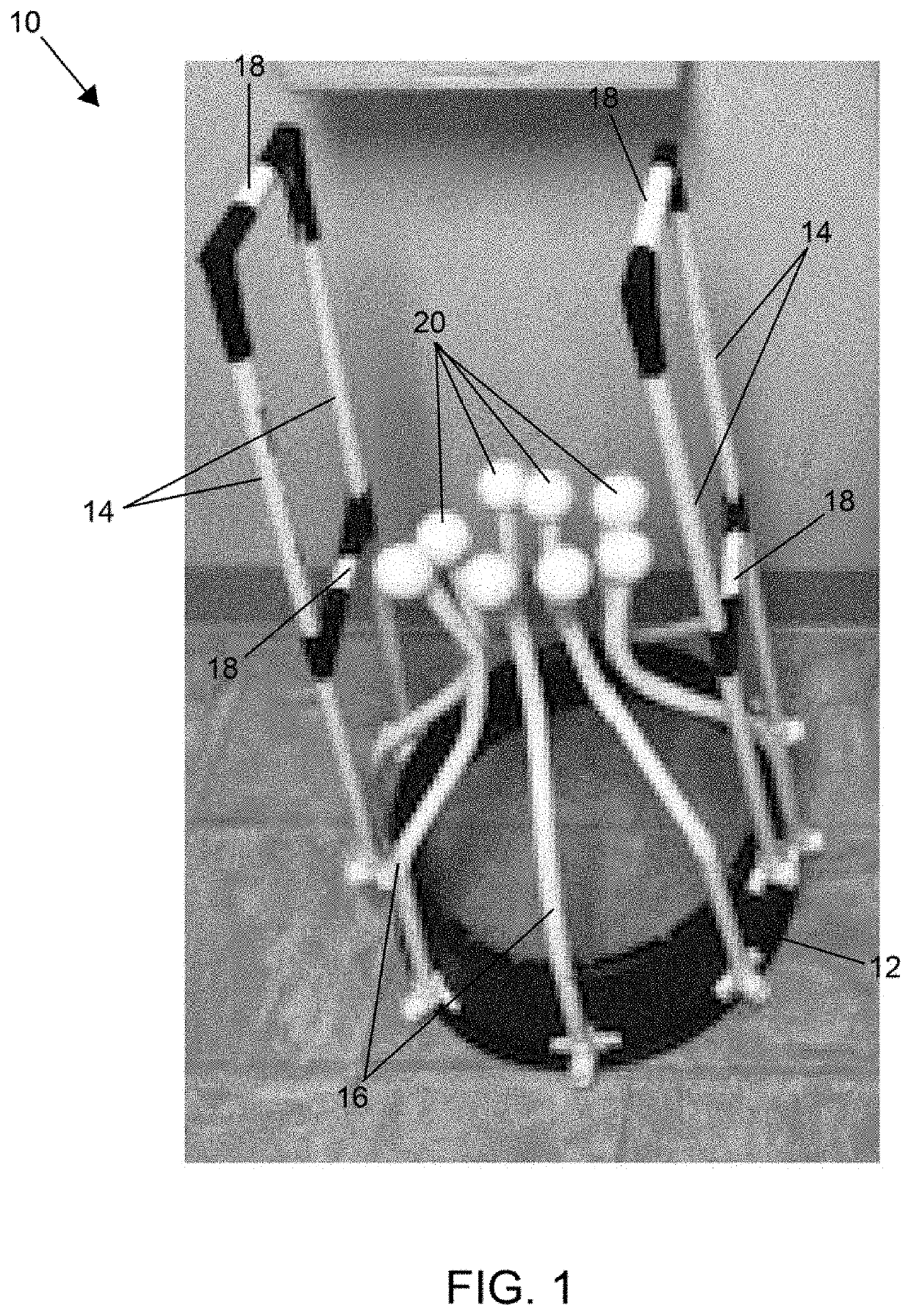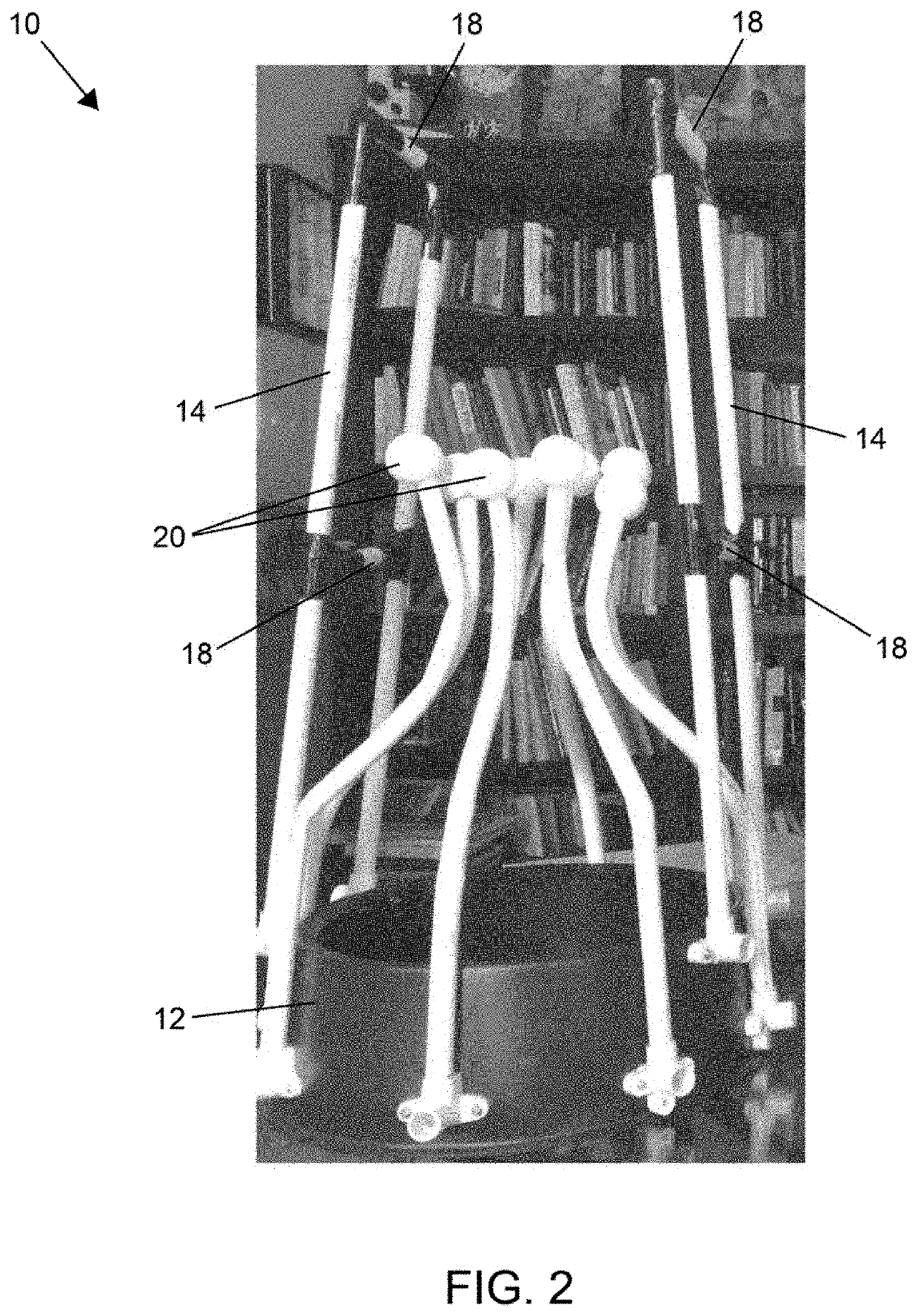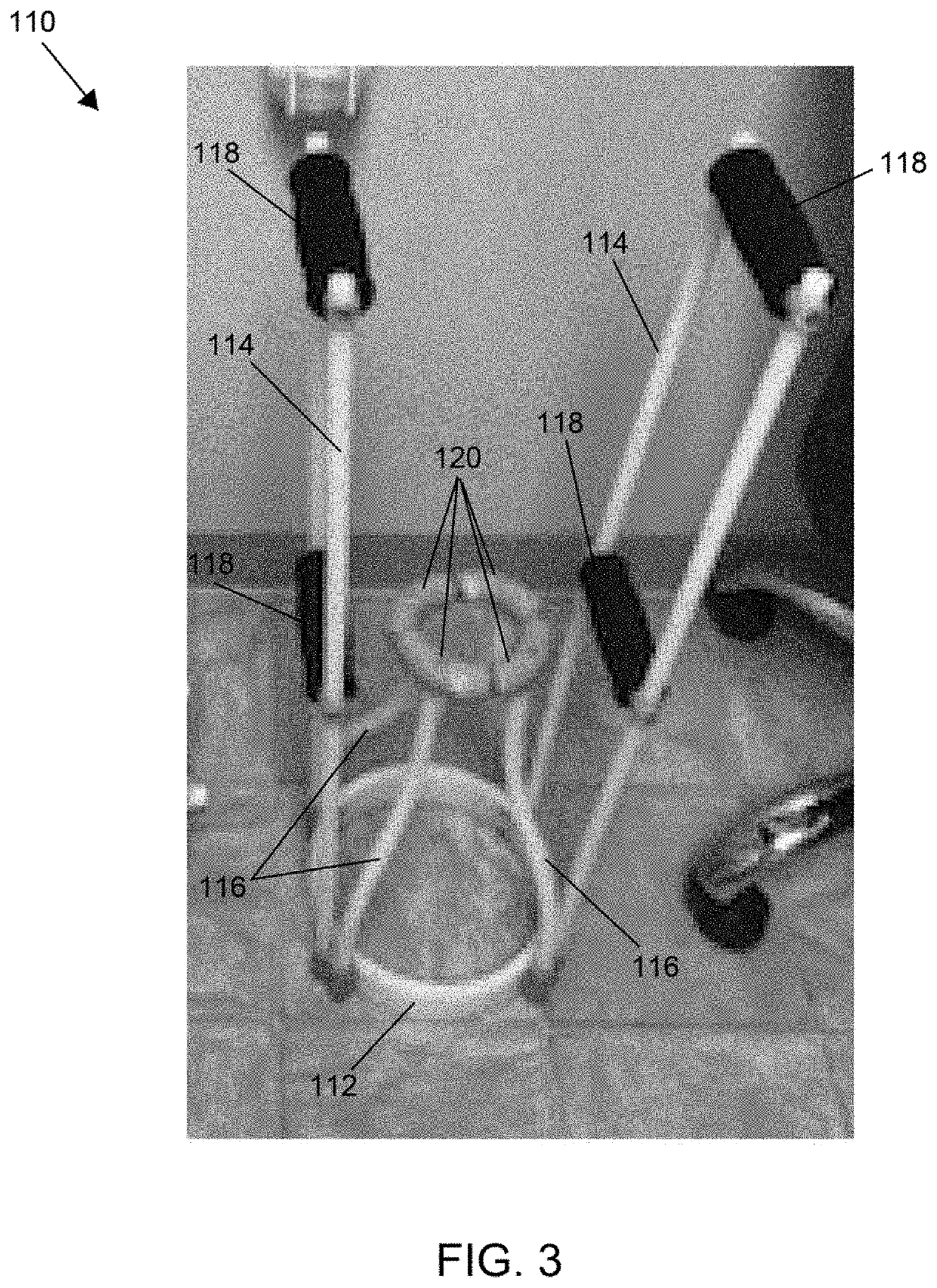Devices and methods for applying compression socks to feet
- Summary
- Abstract
- Description
- Claims
- Application Information
AI Technical Summary
Benefits of technology
Problems solved by technology
Method used
Image
Examples
second embodiment
[0029]FIGS. 3 and 4 depict a device 110 which replaces the spherical distal ends 20 of FIGS. 1 and 2 with soft flexible serrated members 120 that have an arcuate shape so that, together, the soft flexible members 120 define a generally circular opening at the entrance to the arms 116. Each of the soft flexible members 120 are mounted to an individual arm 116. Under certain circumstances, the soft flexible members 120 at the distal ends of the arms 116 may promote the ease with which a compression stocking can be installed on the device110.
third embodiment
[0030]FIGS. 5, 10, and 11 depict a device 210 which replaces the spherical distal ends 20 of FIGS. 1 and 2 and the soft flexible serrated members 120 of FIGS. 3 and 4 with rollers 220. Each roller 220 is connected to the distal ends of two adjacent arms 216 such that the device 210 comprises eight arms 216 and four rollers 220 that define a generally square-shaped opening at the distal ends of the arms 216 rather than the circular-shaped opening of the embodiment of FIGS. 1 through 4. The axial ends of each roller 220 may be rounded to eliminate sharp corners. The rollers 220 are preferably capable of freely rotating to further decrease the active friction between the distal ends of the arms 216 and the compression sock as it is being applied. The two arm connections to each of the rollers 220 can also provide greater stability during use while also permitting a desirable degree of lateral or outward flexible motion of the arms 216 in order for the arms 216 to expand and allow passa...
PUM
 Login to View More
Login to View More Abstract
Description
Claims
Application Information
 Login to View More
Login to View More - R&D
- Intellectual Property
- Life Sciences
- Materials
- Tech Scout
- Unparalleled Data Quality
- Higher Quality Content
- 60% Fewer Hallucinations
Browse by: Latest US Patents, China's latest patents, Technical Efficacy Thesaurus, Application Domain, Technology Topic, Popular Technical Reports.
© 2025 PatSnap. All rights reserved.Legal|Privacy policy|Modern Slavery Act Transparency Statement|Sitemap|About US| Contact US: help@patsnap.com



